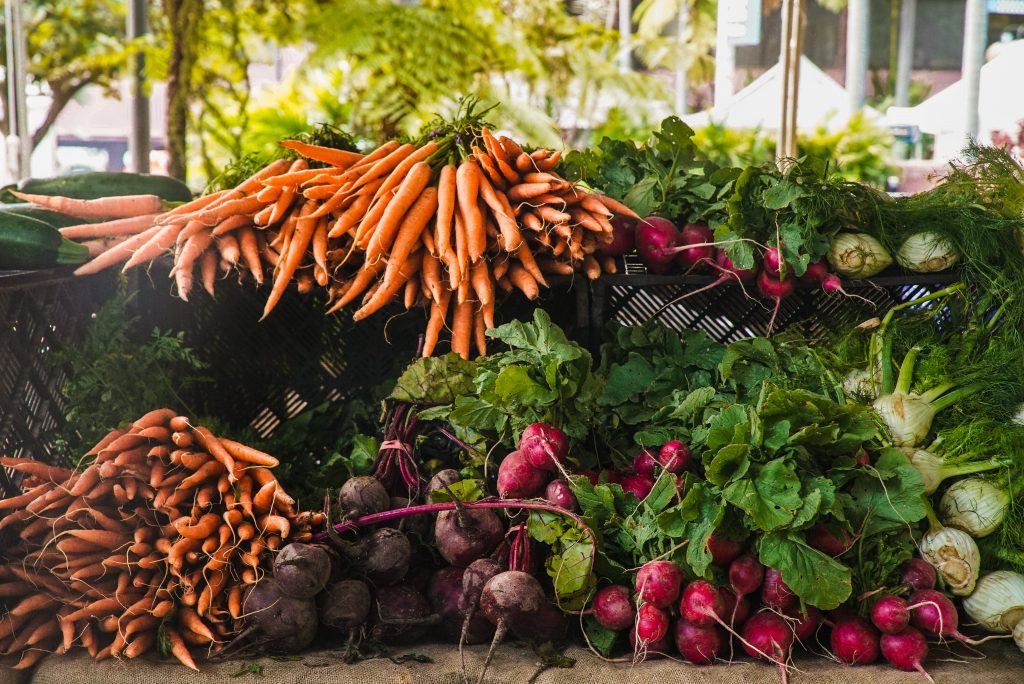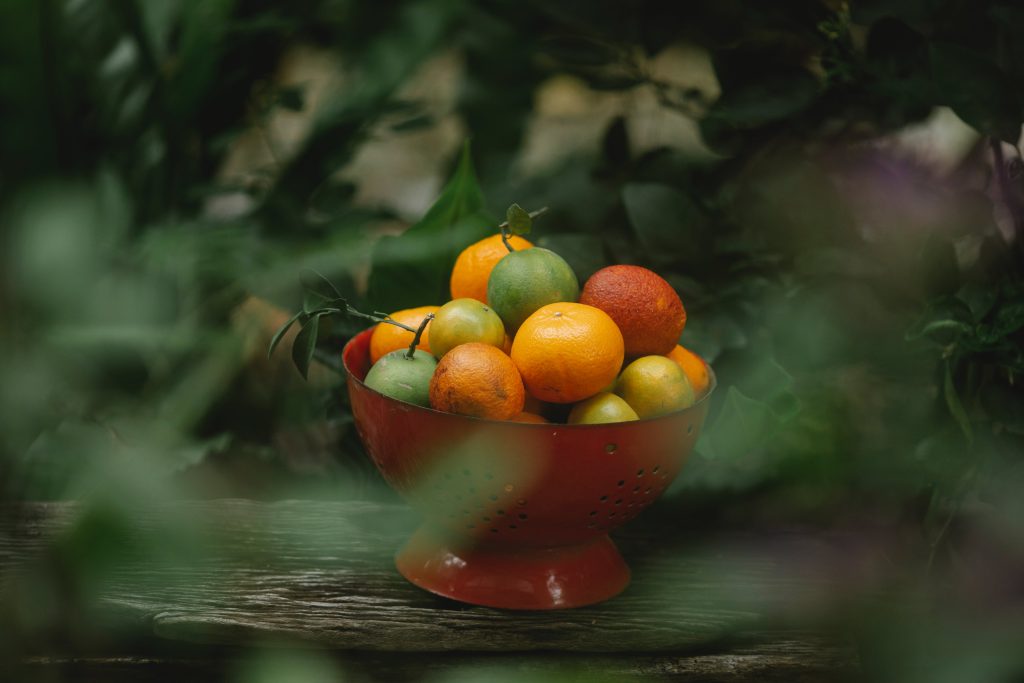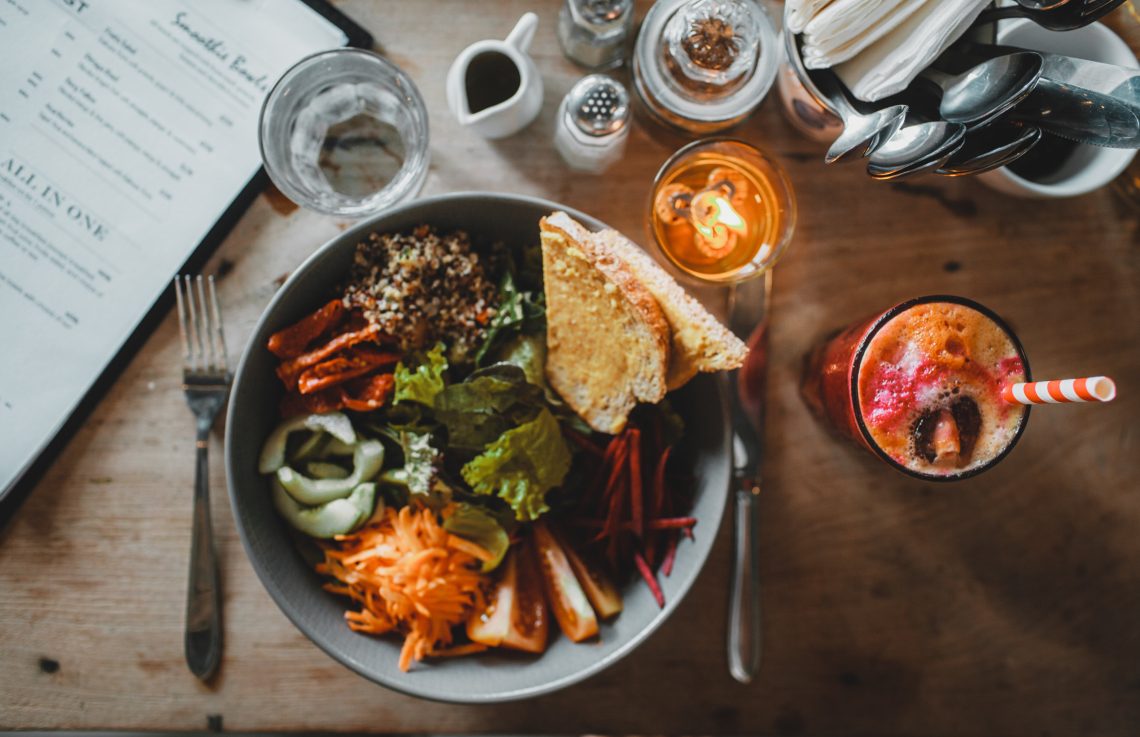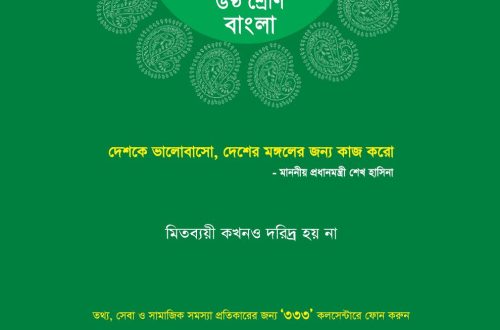Diabetic diet charts for patients are often worried about what to eat and what not to eat. Many people think that having diabetes means stopping the enjoyment of their favorite foods. Going through life eating bland food instead of delicious food. Many people look for special diet plans or special recipes for diabetic patients. It is not like that at all. Food is almost the same for everyone. Not only diabetics, but all people should eat nutritious and healthy food for good health. However, it is a little more important for diabetic patients.
Before listing food, it is necessary to understand a little about what nutritious or balanced food means. Our body needs a variety of nutrients to perform its daily functions. The main ones are carbohydrates or sugars, proteins or meat, fats or oily substances, various vitamins, and mineral salts. All of these are useful for the body in one way or another. So only if all these elements are present in the daily food will it be considered nutritious or balanced. Another important factor is the energy or calorie content of food.
Calories are a measure of how much energy the body can get from food or how much work it can do. Many people have a misconception about it. As many people are consuming high-calorie foods without paying attention to this, many people think that calories are bad. Many people go on an extra low-calorie crash diet in an attempt to lose weight or slim down. Both are harmful to the body. Our body needs a certain amount of energy for its daily functions. The Diabetic diet chart should be planned in such a way that energy is obtained from the daily food.
According to the guidelines of the American National Institute of Health, how many calories are needed per day, 1,600 to 2,000 calories for normal-weight adult men and 1,200 to 1,600 calories for women should be consumed. However, this calculation is not universal. It can be more or less based on age, weight, physical activity, and lifestyle. Your diabetes doctor or nutritionist can give you accurate information about this. As mentioned earlier, a balanced diet should contain all the nutrients in the right amount. Many people think that if you have diabetes, you should completely avoid sugary foods. But these sugars are the main source of energy for our body. So it must be in the Diabetic diet chart food. But it should be healthy.
Related Topic: How to lose weight without Exercise
For a person with a target of 2,000 calories per day as Diabetic diet chart, the DASH diet recommends the following serving sizes and daily to monthly serving limits:
- Vegetables (1/2 cup cooked or raw vegetables, 1/2 cup of vegetable juice, or 2 cups of leafy green vegetables-1 cup is about the size of a baseball or your fist): 4-5 per day
- Fruits (1/2 cup fresh, canned, frozen, dried fruits or 1/2 cup of fruit juice): 4-5 per day
- Whole grains (1/2 cup cooked rice, pasta, or cooked cereal; 1 Oz rice or dry pasta; 1 slice of bread; or 1 cup of ready-to-eat cereal): 6-8 per day
- Fat-free or low-fat dairy (1 cup milk, yogurt, or 1½ Oz (about the size of four dice or a 9-volt battery) of cheese): 2-3 per day
- Fish, lean meats, or poultry (3 Oz, or about the size of a deck of cards or the palm of your hand; 2 egg whites or 1 whole egg): 6 or fewer per day
- Nuts, beans, or seeds (1 tablespoon of peanut butter, 1/2 Oz of nuts or seeds, or 1/4 cup cooked beans):4-5 per week
- Fats and oils (No more than 1 tablespoon): 2-3 per day
- Sweets and added sugar (about 100-150 calories per serving): 5 or fewer per week
Mediterranean diet (Diabetic diet chart)
The Mediterranean diet is a heart-healthy eating plan based on foods that are grown in countries around the Mediterranean Sea. Research has shown that the Mediterranean diet can reduce your risk of heart disease, metabolic syndrome (a group of conditions that raise your risk of heart disease and stroke), diabetes, some cancers, and depression. It may also help you reduce insulin resistance and inflammation and lose weight without exercise. People with high blood sugar may have inflammation in their bodies, and reducing the inflammation may help prevent some of the long-term problems of diabetes.
In the Mediterranean Diabetic diet chart, you focus on lots of vegetables, fruits, whole grains, beans, and nuts. You use extra virgin olive oil, and sunflower oil in place of butter or other oils. You avoid dairy products, red meat, sweets, added sugars, sodium (salt), and highly processed foods. Some additional guidelines include focusing on seasonal produce and reading food labels to help you avoid added sodium, cholesterol, and sugar.
For people on 2,000 calories per day Diabetic diet chart, the Mediterranean diet recommends the following serving sizes and daily or weekly serving limits:
- Vegetables (1/2 cup cooked vegetables, 1 cup raw vegetables, or 2 cups of leafy vegetables): 4 or more per day
- Fruits (1 medium piece of fruit or 1 cup of cutting fruit): 2-3 per day
- Whole grains (serving sizes vary, so check with the label to find out what a serving is, but generally, 1 cup of readymade cereal, 1 slice of bread, or 1/2 cup of cooked rice or pasta): 3 Oz per day
- Fat-free or low-fat dairy (1½ Oz of cheese about the size of four dice): 2 per day
- Fish, lean meats, or poultry (3-5 Oz or about the size of a deck of cards): 3 or more per week for fish, no more than 9-28 Oz per week for meat or poultry
- Nuts, seeds, or beans (1/4 cup of unsalted nuts or seeds or 1/2 cup of beans): 4 times per week for nuts or seeds or 3-4 per week for beans
- Fats and oils: Swap out saturated and Trans fats with polyunsaturated fats, such as olive oil, Rice bran oil, etc.
Best Foods List for People with Diabetes

Vegetables
In the Diabetic diet chart, Vegetables are one of the most useful food groups but most of us aren’t getting enough of it. They’re packed with nutrition, like vitamins, minerals, protein, and antioxidants. Vegetables are generally divided into two types:
- Non-starchy
- Starchy.
Non-starchy Vegetables: The following vegetables are a list of common non-starchy vegetables:
- collards, Swiss chard, mustard greens
- cauliflower
- Brussels sprouts
- asparagus
- celery
- onions
- tomatoes
- zucchini
- garlic
- mushrooms
- okra
- potatoes
- corn
- green peas
- collard greens
- cabbage
Better choices for non-starchy vegetables include:
- Fresh veggies, such as broccoli, carrots, peppers, green peas and tomatoes-eat them raw, lightly steamed, roasted, or grilled
- Plain frozen vegetables, lightly steamed or other
- Greens such as collard green, kale, spinach, and arugula
- Tabouli and other types of nutrient-rich mixed veggies
- Low-sodium or unsalted canned veggies
Starchy Vegetables: The following vegetables are a list of common starchy vegetables:
- pumpkin
- winter squash, such as butternut squash, acorn squash
- sweet potatoes
- potatoes
- yucca
- cassava
- corn
- sweet peas
- wheat
- brown rice
- oats
- cornmeal
- barley, or quinoa
- bread
- pasta
- cerealor tortillas
- Potatoes
- corn
- green peas

Fruits
Fruits are very beneficial for our health. Every person should have a fruit of any kind in their daily diet for their good health. The benefits of eating fruit are great for anyone of any age. The following fruits make good additions to the diet of anyone who has type-2 diabetes. Let’s know some fruits name that make healthy and reduce diabetes:
- apples
- avocado
- blackberries
- cherries
- grapefruit
- pears
- bananas
- lemons
- limes
- plums
- apricots
- peaches
- strawberries
- blueberries
- grapes
- oranges
Beans
While beans are packed with nutrients, they are also low in calories and fat. It also has no cholesterol. It can be boiled, raw, or used with any cooking. Diabetic diet chart in terms of nutritional value, beans play a special role in preventing diabetes. Beans are rich in vitamin C. 20.4 grams of vitamin C can be found in 10 beans or 34 grams of beans. About 23 percent of the daily requirement of vitamin C is met through beans.
A 1/3-cup serving of cooked beans has about 15g of carbohydrates and delivers fiber, plant-based protein, vitamins, and other nutrients.
Below are some examples of legumes to pick up in canned, frozen, or dried form beans:
- Black beans
- Refried beans
- Hummus
- Falafel
- Lentils
- Peas
- Tempeh
- Tofu
- White beans
- Garbanzo beans
- Kidney beans
- Pinto beans
- Navy beans
- Butter beans
- Chickpeas
- Lima beans
- Fava beans
Whole Grains
A one-third of a cup serving of cooked grains has about 15g of carbohydrates. To bulk up your serving, add lots of non-starchy vegetables.
Whole grains can be an effective way for people with diabetes to reduce their blood glucose levels since they often have a lower glycemic index. Some of the whole grains foods:
- brown rice
- buckwheat
- quinoa
- millet
- bulgur
- rye
- barley
- pasta: bean-based (such as black bean, lentil, chickpea), whole-wheat, alternative grain-based
- bread (1 slice): look for 100% whole wheat or 100% whole grain
Proteins
Consuming this protein shake makes you feel full. A diabetic diet chart prevents blood sugar by reducing digestion. Not only this, it also helps prevent you from overeating and losing weight. Vegetarians have a variety of plant-based protein options, such as soy, rice, wheat, and pea proteins. Below are some examples of protein foods:
- eggs
- fish and other seafood, including shrimp, haddock, salmon, cod, scallops, sardines and tuna
- poultry, chicken thighs, including chicken breast and ground chicken and turkey
- red meat, including cubed beef, beef tenderloin, flank steak, lean ground beef, sirloin
- pork, including pork loin, ground pork and pork chops
Dairy
According to doctors, there is no restriction in consuming milk for diabetic patients. Because there are few drinks as healthy as milk. Milk contains various minerals, various proteins as well as calcium.
A study conducted at the University of Guelph and the University of Toronto found that drinking milk for breakfast every day is beneficial for people with type-2 diabetes. It keeps blood sugar levels under control.
Eating foods like oats, cornflakes, and milk for breakfast reduces blood glucose levels. According to the researchers, since obesity increases the risk of diabetes, it is especially important to pay attention to the diet. If you want to eat protein-rich food for breakfast, milk is a good option.
In addition to protein, milk contains various vitamins and minerals that fill the nutritional deficiency in the body. These are beneficial for a diabetic patient. But there are three things you can mix with milk to get more benefits. It can control the blood sugar level.
Some of the best options to add:
- Parmesan
- ricotta
- low fat or skim milk
- low-fat Greek
- plain yogurt
- cottage cheese
- cheese, including Cheddar and Swiss
Nuts and Seeds
Nuts and seeds deliver healthy fats plant-based protein, and vitamins to your diet for very few carbohydrates. Nuts and seeds make great snacks or toppers for your regular meal or mixed vegetables. Some of the nuts and seeds most helpful for reducing diabetes are:
- almonds
- walnuts
- pecans
- pistachios
- peanuts
- chia seeds
- flaxseeds
- hemp seeds
- hazelnuts
Meat
Meat is one of the best sources of animal meats, iron, zinc, thiamin, riboflavin, selenium, and vitamin B-12. Generally, a person can eat 50 to 70 grams of meat per day or about 400 to 500 grams of meat per week. But red meat beef and mutton are high in saturated fat, so overeating increases the level of harmful cholesterol in the blood and increases the risk of high blood pressure, heart disease, stroke, and cancer. Therefore, meat should be consumed with caution and in moderation.
The following are some good sources of protein to choose from:
- Skinless and boneless chicken breast or strips
- Salmon, tuna, and other oily fish
- white fish fillets
- skinless turkey breast
- eggs
Dressings, dips, spices, and condiments
Plenty of flavorings and dressings can be great for those trying to control their blood sugar. The following are some tasty options that diabetes can choose from:
- vinegar
- olive oil
- mustard
- any spice or herb
- any variety of extract
- hot sauce
- salsa
Fatty fish
According to a recent study, marine fish contains high levels of protein and almost no harmful fats. The taste of sea fish may vary depending on the species but when it comes to health benefits, all sea fish are packed with nutrients. Seafood contains high levels of omega-3 fats, vitamin D, and vitamin A. These nutrients protect our bodies from many complex diseases.
- salmon
- mackerel
- sardines
- albacore tuna
- herring
- trout
Eggs
Eating eggs increases insulin sensitivity. It helps in controlling blood sugar levels. Simply put, eating eggs with diabetes is beneficial in one way. Doctors forbid eating eggs if cholesterol increases.
Chia seeds
Chia seeds can be an ideal food for those suffering from ‘pre-diabetes’ or ‘type two diabetes’. These seed-type foods are not available in regular grocers or stores but are available in supermarkets.
It is rich in protein and dietary fiber. A diabetic diet chart which is very beneficial for digestion, weight control, and heart health. Its role in controlling diabetes is also outstanding.
According to The British Journal of Nutrition, daily consumption of chia seeds reduces insulin resistance. And this is the main problem of diabetes.
In a study conducted by Kuwait University in 2021, a group of adult diabetic patients were fed 40 grams of ‘chia seeds’ per day for 12 weeks. Another group is not fed it.
Both groups followed a healthy diet during this period and exercised similarly, and to the same extent.
It can be seen that those who ate ‘chia seeds’ had significantly lower blood sugar levels than the other group.
Citing this research, the report published in Itis.com informed that the main role behind the benefits of ‘chia seed’ is its edible fiber. What is soluble fiber?
This type of fiber is also found in apples, oats, beans, etc. This fiber slows down the digestion process thereby balancing the blood sugar levels.
Drinks
Water is healthy and essential for everyone, including individuals with diabetes. Diabetes is a chronic disease. Once you get this disease there is no way to get rid of it completely. In this case, doctors advise to follow the routine. Diabetes can also be controlled through a controlled lifestyle. To keep blood sugar levels under control, you need to pay attention to what you eat as well as what you drink as a Diabetic diet chart.
Better choices for drinks include the list below:
- Water
- Black Coffee or with added low-fat milk and sugar
- Sugar-free tea with or without a slice of lemon
- Lassi with low-sugar
- Zero-calorie drinks
- unsweetened ice or hot tea
- low fat or skim milk
- unsweetened plant-based milks
- sparkling water
Garlic
We all know the quality of garlic in Rasana. But apart from cooking, garlic has various properties. Many people do not know about that. It has antibacterial and antifungal properties, along with minerals like phosphorus, calcium, potassium, iron, and copper.
The main problem of diabetes patients is high or low blood sugar levels. Garlic can work to solve this problem. Studies have shown that garlic helps reduce the risk of type-2 diabetes. Garlic is very low in calories, carbohydrates, and sugars. Due to this diabetic patients can eat safely.
Dark green leafy vegetables
Collards, Spinach, and kale are dark green leafy vegetables packed with minerals, vitamins and such as vitamins A, C, E, and K, iron, calcium, and potassium. These veggie foods (Diabetic diet chart) are low in calories and carbohydrates too. Try adding dark leafy vegetables to salads, soups, half boil, and stews.
Citrus fruit
Lemons, Grapefruits, oranges, and limes or pick your favorites to get part of your daily dose of fiber, vitamin C, and potassium.
Oils and spreads
If you have diabetes, you need to change your diet. Along with exercise, sugar is under control. To take all precautions in the food and drink of patients. According to nutritionists, diabetics can also consume rice bran oil, sunflower oil, or corn oil. All these fall under the category of polyunsaturated fat.
Walnuts
In addition, according to several studies, walnuts help to increase insulin hormone levels in diabetic patients. Helps control blood sugar levels, reducing the risk of type 2 diabetes. Eating soaked walnuts is common not only in India but all over the world. Soaked walnuts are very beneficial to improve digestion.
Sweet potatoes
Sweet potatoes are very beneficial for the body in controlling blood sugar levels. Sweet potatoes have a low glycemic index, which doesn’t have much of an effect on blood sugar levels. Sweet potatoes also contain a lot of fiber, which is actually beneficial for diabetics (Diabetic diet chart). Even if you eat sweet potatoes, you should eat them in limited amounts.
Sweet potatoes are also a great source of this:
- fiber
- vitamin A
- vitamin C
- potassium
The following is a sample low-carb meal (Diabetic diet chart) menu for a person with diabetes:
| Breakfast | Egg and avocado toast (serves 4): 4 eggs 4 slices of whole grain bread 1 mashed avocado Add salt, black pepper, and plain nonfat Greek yogurt to the avocado |
| Lunch | Mediterranean tuna salad wrap (serves 6): 1 packet of tuna in water (12-ounce) light mayonnaise (1/4 cup) plain nonfat yogurt (3 tbsp) finely diced onion (1/4 cup) 1 finely diced celery finely diced red bell pepper (1/2 pepper) chopped kalamata olives (3 tbsp) black pepper (1/4 tsp) 6 large butter lettuce leaves |
| Dinner | Pecan-crusted chicken breast (serves 4): pecan pieces (1/2 cup) 4 boneless, skinless chicken breasts (6 oz) unsweetened applesauce (3 tbsp) spicy brown mustard (1 tbsp) sea salt (1/4 tsp) |

Foods to limit or avoid
Diabetic patients have to maintain sufficient discipline regarding their diet. In the previous discussion about the Diabetic diet chart, we mentioned what food items can be eaten in any quantity and what food items can be eaten in moderation. Now I am mentioning what foods should not be eaten by diabetic patients:
- simple carbohydrates
- saturated and trans fats
- white bread
- white pasta
- white rice
- fried foods such as French fries
- sugary cereals
- sugary drinks
- processed meats
- red meat
- puffed rice
- white potatoes
- chocolate
- cookies
- cakes
- potato chips
- regular soda
It is also advisable to avoid low-fat products that have replaced fat with sugar. Fat-free yogurt is a good example.
Carb-heavy foods
Carbohydrates (carbs) are the most important part of all meals. However, people with diabetes may benefit from limiting their carb intake or pairing carbs with a healthy protein or fat source.
Saturated and Trans fats
Certain fats, such as Tran’s fats, are saturated and may increase insulin resistance and contribute to reduced blood sugar management with diabetes. Many fried and processed foods, including fries, chips, fast food, and baked goods, contain these types of fats.
Refined sugar
High blood sugar can cause serious damage to blood vessels. If the blood cannot flow properly in the body if the blood cannot reach the places where it is needed, the risk of nerve damage increases. As a result, people can lose their eyesight.
Alcohol
There are many people who are suffering from diabetes but cannot quit drinking. However many people do not know how harmful alcohol can be for diabetes. Diabetic patients should pay special attention to their diet. A little neglect of diabetes can lead to danger. So if you have diabetes, you have to follow some rules.
So alcohol should be completely avoided if you have diabetes. Because its consumption can increase or decrease the blood sugar level.
What should we do?
- Creating a plan
- Plate method
- Glycemic index
- Carb counting
- Sample menu
- Regular Exercise
We have to process the Diabetic diet chart and eat fresh vegetables cook them and eat them. The rise and fall of blood sugar of a diabetic patient also depends a lot on cooking. For example, eating boiled potatoes increases the sugar content faster than potato chips or French fries. If you eat carrots boiled instead of raw, the sugar content increases quickly. Carbohydrates that are cooked for a long time are easily digested and absorbed and quickly raise blood sugar levels. Vegetables that can be eaten raw and fresh are best eaten raw. Those that can be cooked with the skin on are best cooked with the skin on. But vegetables should be cooked a little raw rather than overcooked. It retains the taste, smell, color, and vitamins intact.





